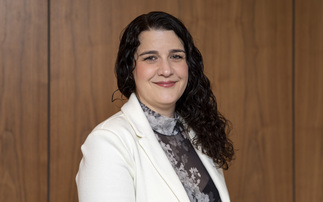Recently in the news after alarming statistics detailing its prevalence, Non-melanoma skin cancer is a public health menace. PruProtect's Fergus Bescoby explains the implications
Understanding the results of a biopsy
If the skin sample contained any cancerous cells, treatment will be required to the area. If an excision biopsy was done, the sample will be closely checked in the lab to make sure a border of healthy skin tissue has been removed all around it.
This is called a healthy margin. If not enough healthy tissue has been removed further surgery will be required. This is important because if any cancer cells are left behind, the cancer can continue to grow.
Treating non-melanoma skin cancer
Surgery is the main treatment for non-melanoma skin cancer. This involves removing the cancerous tumour and some of the surrounding skin.
Other treatments for non-melanoma skin cancer include cryotherapy, creams, radiotherapy, chemotherapy and a treatment known as photodynamic therapy (PDT).
Treatment for non-melanoma skin cancer is generally successful as, unlike most other types of cancer, there is a considerably lower risk that the cancer will spread to other parts of the body.
It is estimated that basal cell carcinoma will spread to other parts of the body in less than 0.5% of cases. The risk is slightly higher in cases of squamous cell carcinoma, which spreads to other parts of the body in about 4% of cases.
Treatment for basal cell carcinoma is completely successful in approximately 90% of cases. Between 70% and 90% of people with squamous cell carcinoma will be completely cured.
Complications
If there is a history of non-melanoma skin cancer in the past, there is a chance the condition may return. The chance of non-melanoma skin cancer returning is increased if the previous cancer was widespread and severe.
Prevention
Non-melanoma skin cancer is not always preventable, but the chances of developing the condition can be reduced by avoiding overexposure to UV light, using sunscreen and dressing sensibly in the sun. Sun beds and sunlamps should also be avoided.
Regularly checking your skin for signs of skin cancer can help lead to an early diagnosis and increase your chances of successful treatment.
Underwriting considerations
Basel cell and squamous cell carcinomas will generally be accepted at *standard rates for all types of cover if a definite diagnosis has been confirmed and the lesion has been fully excised.
The underwriter will need to be sure that there was no lymph node metastases and there has been complete resolution after treatment.
The less common forms of skin cancer, as mentioned earlier in the article will be treated accordingly and depending on when the tumour was removed may well have an extra premium applied.
*If the CIC or SIC policy includes cover for non melanoma skin cancer a slightly different underwriting approach may be necessary.
Fergus Bescoby is underwriting development manager at VitalityLife (formerly PruProtect)








